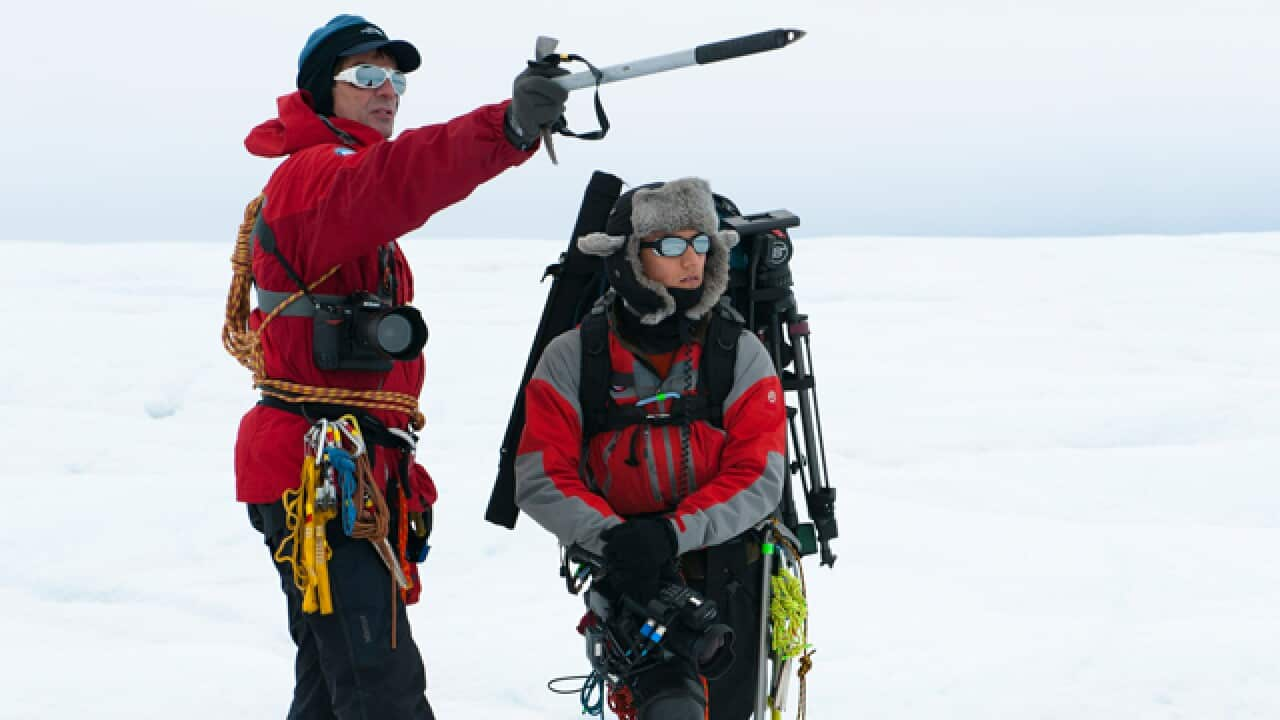It has been the life's work of acclaimed photographer James Balog to capture the interaction between humans and nature. His current project, the Extreme Ice Survey (EIS), records the alarming disappearance of the world's glaciers and is the subject of the documentary .
Balog originally pitched a single story about the recession of the Solheim Glacier in Iceland to the magazine editors at National Geographic. The editors immediately offered Balog the scope for a wider assignment that eventually became a cover story in June 2007 and the magazine's most popular one of the last five years. By Balog's own admission, the experience was transformative. As he recounts in Chasing Ice, “I realised there was a powerful piece of history unfolding in these pictures… the lights went off for me. I realised the public doesn't want to hear about more statistical studies, more computer models, more projections. What they need is a believable, understandable piece of visual evidence – something that grabs them in the gut.”
To continue his work, Balog founded EIS, a three-year project comprised of 25 specially designed cameras set to shoot every daylight hour at the world's largest glaciers. The individual frames are then downloaded and transformed into time-lapse video clips of the changing landscape. As part of the project, Balog works with a team of field co-ordinators and scientists Dr. Tad Pfeffer and Dr. Jason Box. Director Jeff Orlowski volunteered to work with EIS as a videographer and travelled with the team to remote locations in Greenland, Iceland and Alaska to film the installation of the cameras. The potential for a documentary was something Orlowski saw immediately. “That first summer, I remember pitching James the idea but we didn't have the time or the resources or the knowhow so we dismissed it,” he tells me via telephone from Boulder, Colorado.
It was 18 months after the foundation of EIS that Balog began showing audiences the time-lapse photography of the disappearing glaciers. The stunning and poignant images garnered considerable attention and inspired Orlowski to further pursue the idea for a feature documentary. “We were getting great response from the imagery,” the director recalls. “It was to some degree that response that made us decide that we had to do more; package it together and get it out there in some way.”
Chasing Ice is not a portrait of Balog himself as much as it is of the disappearing glaciers and the science that surrounds climate change. “James was very much the man behind the camera and he didn't feel the film should focus on him,” Orlowski says. “He wanted to be the one sharing the time-lapse photography and data but he didn't feel it was his story per se. Ultimately, he recognised the potential that we saw and went along with it.”
Chasing Ice tracks the genesis of EIS and the tumultuous task of documenting the glaciers over time. The team trek through extreme weather conditions, defying the conventional use of technology, capturing images that serve as visual evidence. “We had all of this great footage that showed James breaking down and cameras failing and incredibly harsh weather and circumstances. The difficult thing was figuring out how much to use,” Orlowski explains. “We were always conscious of the balance between how much science versus how much adventure and James' personal story. We wanted people to be intrigued and passionate about the adventure and to pull people into the issue of climate change that way.”
Music for the film was composed by J. Ralph, who scored the Oscar- winning documentaries and as well as Hell and Back Again (an Oscar nominee). Ralph wrote and produced the title song for Chasing Ice, the Academy Award-nominated '', featuring Scarlett Johansson and Joshua Bell. “I wanted something that would allow people to meditate on everything they've seen leading up to it,” Ralph says from his studio in New York City, “almost an hypnotic experience to give the audience one last moment to reflect on the uniqueness and profundity of the imagery. I wanted to create an experience of what it would feel like to stand on the precipice of an unknown void; a hyper-intimate recording of Scarlett as if she was singing to each person individually. There's a bittersweet nostalgia to it, while Josh's violin suggests hope.”
Chasing Ice opens in limited release at Melbourne's Cinema Nova on April 4th.
